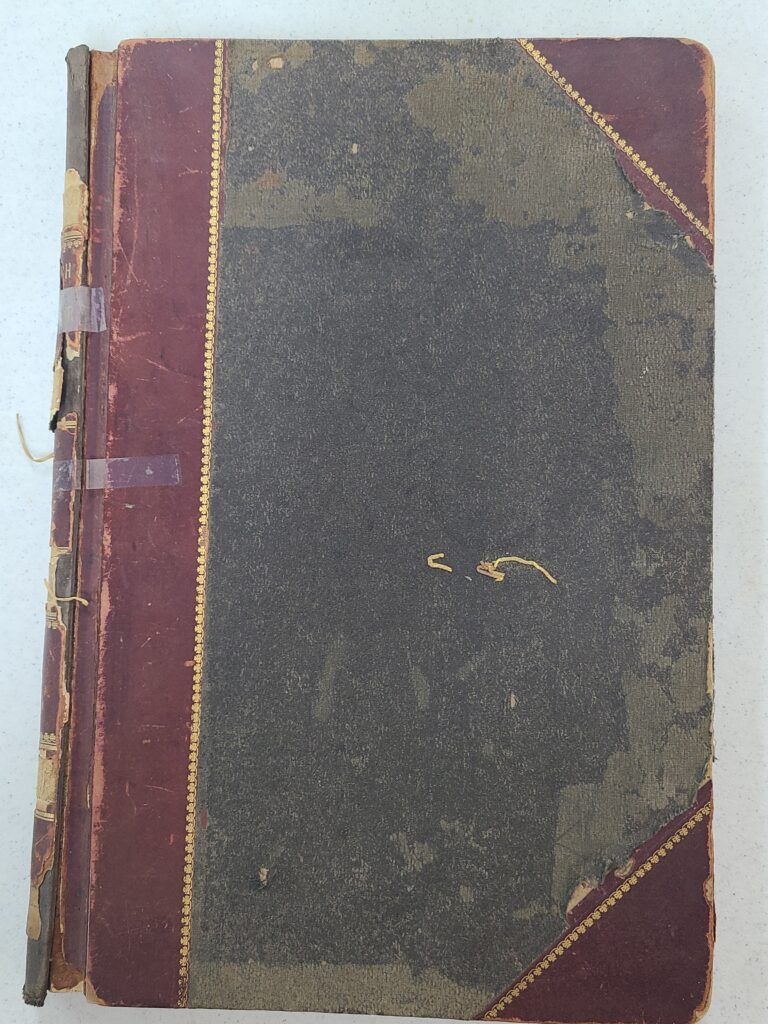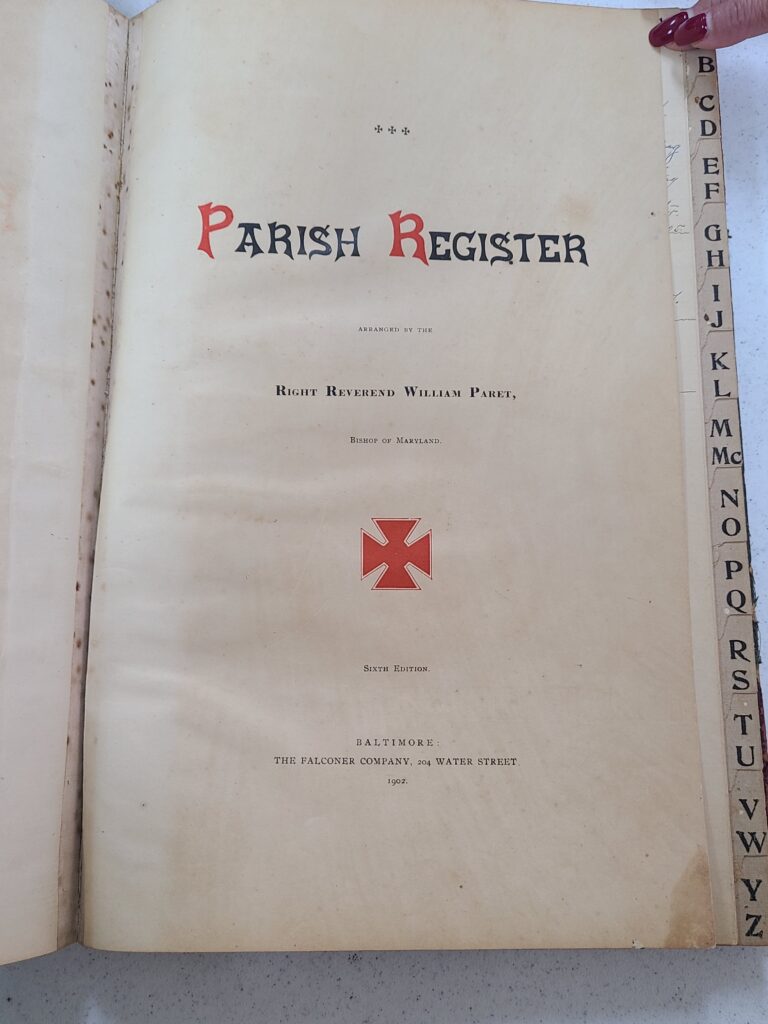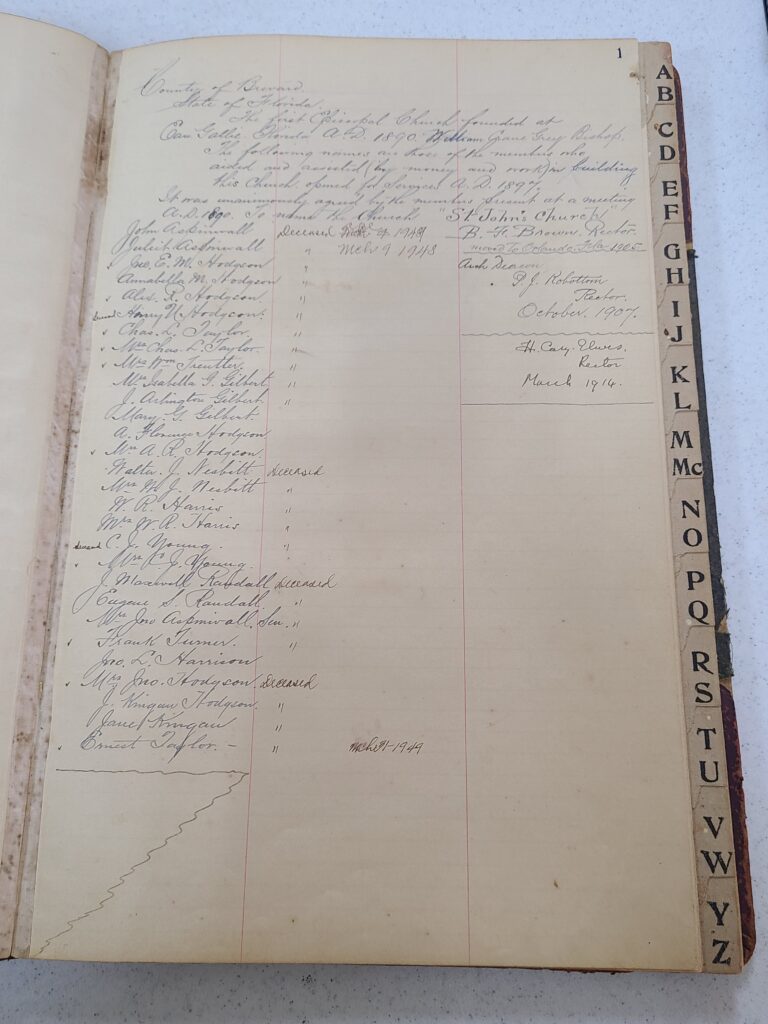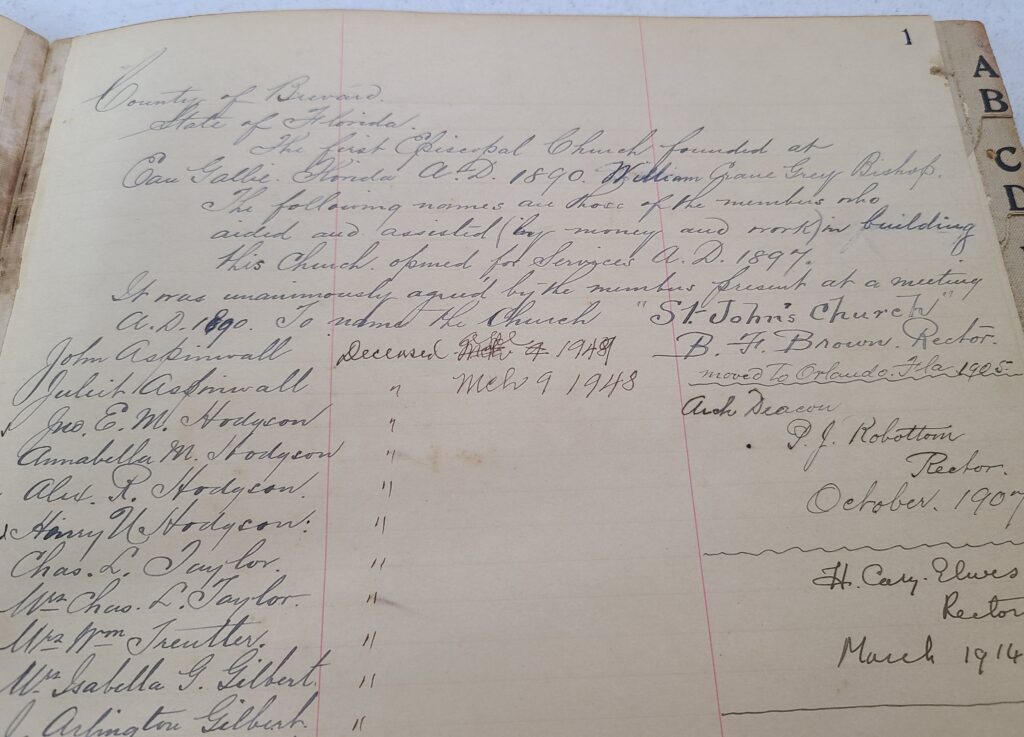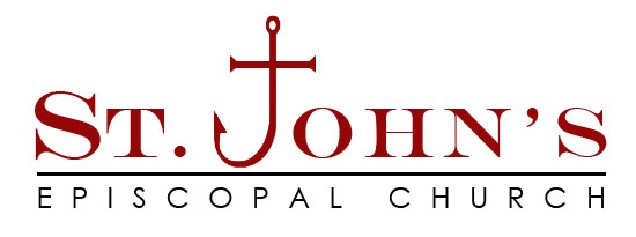For over 125 years, St. Johns has been maintained and supported by its loving parishioners. We offer a prayer of thanksgiving in appreciation to all of our generous benefactors.
The Founding Families
In 1856, there were only eight families scattered along the lower Indian River. John Houston and his family were the first settlers in this area; he named it Arlington. Later, in 1870, when the local residents requested a post office, Mr. W.H. Gleason named the area “Eau Gallie” (Indian and French words meaning “Rocky Water”), possibly because of all the coquina rocks visible in the clear Indian River Lagoon at the time.
In 1883, Alexander and Henry Hodgson, two bachelor brothers, visited Eau Gallie. When they later returned to Montreal, Canada, they spoke with so much enthusiasm about Eau Gallie that they persuaded their brother John Hodgson, age 34, and his family to move here.
So, in 1884, the family left Montreal and moved south to Florida. With the three brothers were John’s wife Annabella, their two children, Annabella Florence and John Kingan, and their aunt Jane Kingan, age 65. After their move here, the Hodgsons had two more children: Elizabeth Isabelle (1889 – 1912) and Gordon (1891-1892)
St. John’s first parish register shows three baptisms, seven confirmations, one marriage and eleven burials for the Hodgson family. John’s wife Annabella died in 1892, not long after her baby son Gordon and her aunt Jane Kingan also died; the three stained glass windows behind the altar are dedicated to Annabella, Gordon and Jane.
John Hodgson was reliable, held in high esteem and had a tireless and persistent personality. To wit, when he died in 1918, every business in the area closed for his funeral here.
In 1890 a Sunday trip to church in Melbourne took all day. Hodgson counted 29 people in Eau Gallie township who wanted an Episcopal church and he began petitioning the Bishop.
Charles Young, one of the 29, had married Mary J. Houston, granddaughter of the first settler. On April 6, 1897 she signed away her dower rights to a portion of land on Young St. to the “Protestant Episcopal Church of the Missionary Jurisdiction of Southern Florida” for the purpose of building a church already named St. John’s.
In 1896 he heard that the “mission at Eau Gallie” had been assessed $3 at the South Florida Episcopal Convention. He was jubilant; it meant they were being recognized as an actual church!
The Church Structure: 1897 – 1961
The Cornerstone was placed on April 26, 1897. The building was completed by late November, 1897 and the debt retired in 1899. On Feb. 20, 1898, with Archdeacon Brown officiating at the service, St. John’s was officially open; then the church was formally consecrated on Feb. 25, 1900.
It was built of varnished heart pine in the “carpenter gothic” style of the day; the style represented an upside-down ark. The stained glass windows were designed and constructed in the old style (glass painted and fused on glass).
The choir sat to the left of the altar and the “foot-pumped” organ was placed as per the organist’s wishes. And finally, the church was wired for electricity in 1921.
Building for the Future – From Mission to Parish and the 1961 Addition
Though incorporated in 1959, St. John’s was still a mission. In 1961, the members applied to the Diocese for Parish Status, which was granted May 27, 1962.
At the same time, they began the planned worship space expansion. The original pine building was moved farther back (north) on the property and the A-frame addition was constructed and completed in time for services at Christmas, 1962. This expansion increased the total seating capacity from 85 to 220. And above the entryway, a small choir loft was built.
An Austin pipe organ with over 1500 pipes was moved from St. Paul’s, Winter Haven to St. John’s. The parishioners built a new addition to house it and they installed it in 1967. At the time, it was the largest pipe organ in Brevard County.
Our Campus
In 1955, St. John’s acquired 2 lots west of the church and built a parish house during 1955-57. In 1964, 7 classrooms, 2 wash-rooms and the covered walkway from the church to the hall were added. During 1976-77, the parish house was expanded with an enlarged kitchen, an outer office, copier room, washroom, the new Rector’s office and the inner courtyard. On March 6, 1978, the hall was dedicated as Lelia Hall, to honor her father, Meritt Preston.
St. Nick’s house on Young Street east of the church was acquired in 1963 and what became the west end parking lots were acquired in 1980. Between 1965-1985, St. John’s acquired on Shady Lane, James’ House, the ‘Flower’ House and adjacent parking lots. In 1997, on the south side of Young St., the church acquired the land now encompassing the parking lots and the park overlooking the Eau Gallie River and Yacht Basin. The land was cleared and the park, gazebo and parking areas were created and completed by 2002.
The Memorial Garden, set amid old oaks behind the church, was consecrated in 1977. This beautiful, secluded area honors our deceased parishioners whose names are inscribed in plaques on the north wall.
For a virtual tour of all the buildings and spaces described above, please click here.
If you are interested in some more detailed history of St. John’s and the surrounding community, we are pleased to make available online “The Mission of St. John’s”, published in 1981.
Click here to open the PDF in a new tab.
Recently discovered !!
While organizing the accounting office, we discovered the original Parish Register incredibly preserved. This unique piece of St. Johns history dating from 1890 will be preserved for generations to come.
